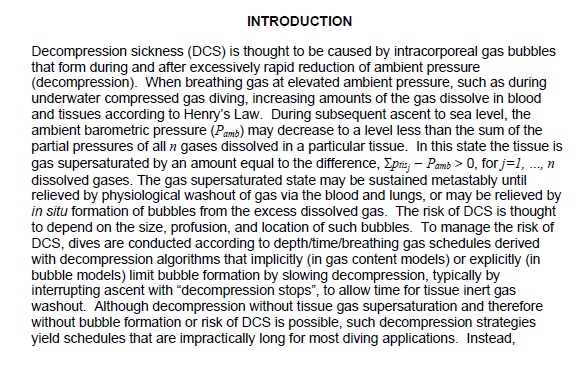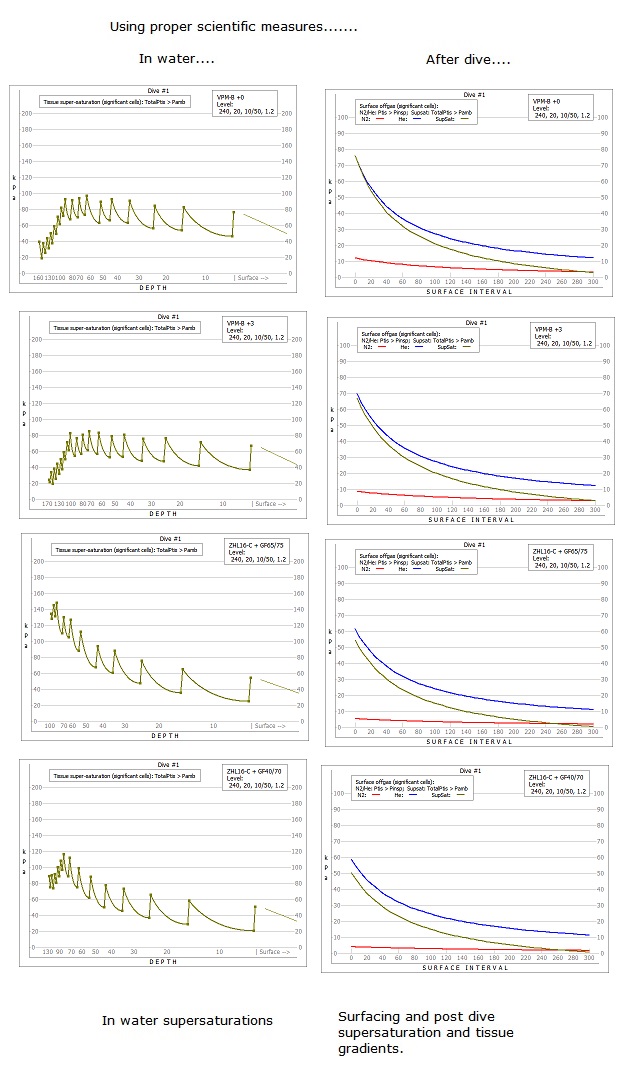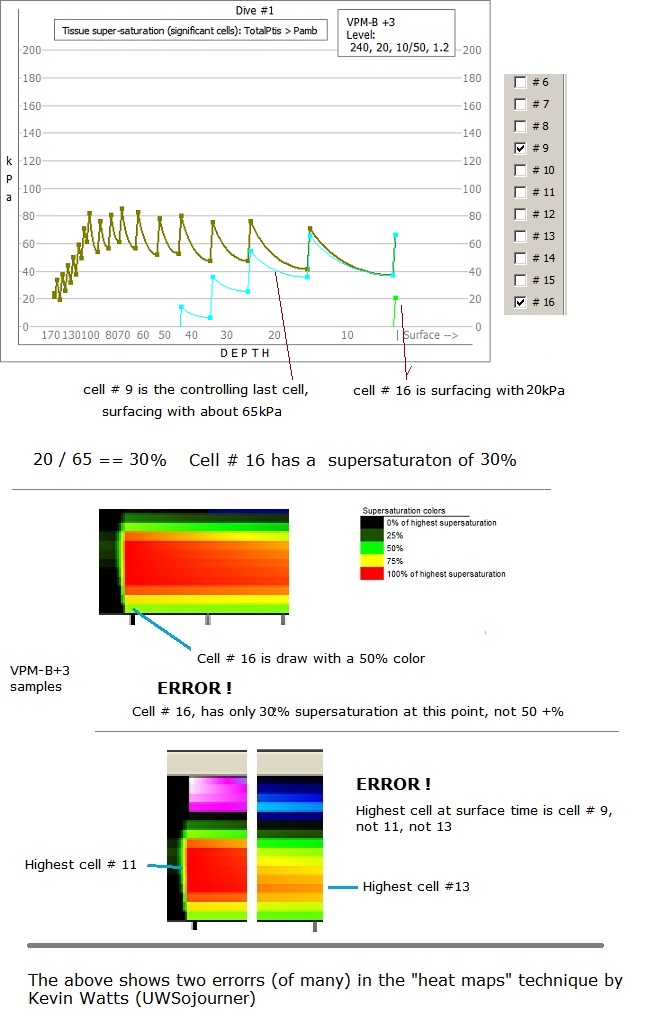AFAIK Erik Baker introduced a Boyle's Law compensation subroutine with VPM-B, but
the bubble model parameters in VPM-B are still the same for all compartments. Same
Skin_Compression_GammaC, same Surface_Tension_Gamma, same
Crit_Volume_Parameter_Lambda, same
Critical_Radius_N2_Microns, same Critical_Radius_He_Microns, for all compartments..
Yes, and the issue corrected, was, the iterative process called for the initial ascent calculation to be carried up all steps, but in doing so, the ambient pressure argument was not correct. Hence the -B, effectively unrolls the initial calculation at each ascent step, corrects the microbubble changes, and then computes the step values.
Now also if you read the Bennett Elliot Chapter, that describes the VPM model in detail, somewhere it also speaks of this omission.
You may not know this, but this the entire modern VPM development process, was done in the community of deco experts and scientists at the time (late 90's onwards), on a usenet list (Maiken Yount, Baker, Pyle, many others too). If you want to know the answers to many of these complex decisions, then its all there for reading. Send me a PM for a link - i have the almost the whole list archived.
There's no physiological reason for this. The tissues in the human body are not all the same.
Since when do models represent physiology so perfectly? Never.
Regarding calibration with experiments:
In the update explanation for VPM-B, Erik Baker writes "The new program tends to be somewhat conservative and the Critical Radii may need to be dialed down a little (try for example 0.55 to 0.7 for N2 and 0.45 to 0.6 for He). Also the Critical Volume parameter Lambda may need to be reduced a little to say 6500."
In the Fortran code of VPM-B, there's the comment "
C The critical
C volume limit is set by the Critical Volume Parameter Lambda in the program
C settings (default setting is 7500 fsw-min with adjustability range from
C from 6500 to 8300 fsw-min according to Bruce Wienke)."
Setting these values has a big impact on the resulting deco schedule and on the shape of the decompression curve, like the M-Values in Buhlmann. Where do all of these numbers in VPM-B come from? Any experiments behind it, like Buhlmann did to determine the M-Values?
Yes, with the addition of the -B code, it changes the shape and style of the ascent, to much longer and curvier in the middle. So the calibration points of CR were brought down realign the profiles.
I have to say, when the -B was added, it really made VPM come alive, and it responded and fitted well to all types of dive profiles. It made VPM-B very versatile and was the missing piece. As I said above, its the only model today, that can make real world dive plans, straight out of the box. No fiddling needed. From NDL to 100m, to long or shallow and all places in between.
20% of my old X1 V-Planner Live program customers still use a VPM-B plan in with 0 or +1 settings. That's about 25,000 dive records in
our database.
.
. They just have very limited use for a dive decompression, and they show no valuable or controlling limiting data.








